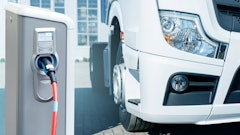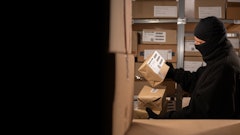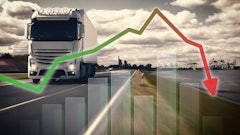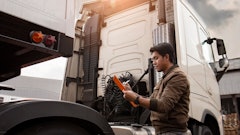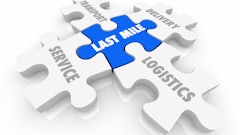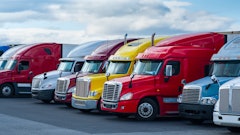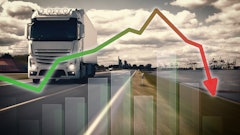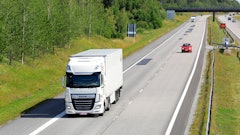
From enhancing visibility, building resiliency and mitigating risk to leveraging smart technologies and automated software, a digital supply chain means different things to different companies.
Yet, digitization itself presents the same benefits across the board in moving temperature-controlled foods in a safe and efficient manner.
Marina Mayer, Editor-in-Chief of Food Logistics and Supply & Demand Chain Executive, talks exclusively with Armon Shahpar, senior lead, enterprise partnerships, Uber Freight, about how tech-forward tools help food and beverage shippers successfully optimize their routes.
CLICK HERE to read the article in full.
Food Logistics: What is a digital supply chain? What does it mean for you/the cold food chain?
Armon Shahpar: Modern digital supply chains tap into intelligent, data-driven tools to optimize the way goods, like food and beverages, are delivered. Today’s supply chains are more complex than ever, and so it’s critical that the tools to power them are data-informed and offer real-time insight into the market. Shippers in the cold food chain need to be nimble, so technologies that can offer instant access to a variety of capacity options and real-time tracking/pricing/billing have become table stakes. Paired with technology, we’re also creating a lot of synergies here at Uber Freight, and are working closely with customers to optimize their networks. Because of our unique scale and capacity options, we’re able to unlock greater efficiency and cost savings – particularly during periods of volatility. If demand peaks during beverage season and shippers need extra capacity, we’ve got it. Unique freight that requires special capacity options, we can do that too. Our role is to know the ins and outs of our customers' operations so that beyond our technology, we can partner with them to navigate any market conditions.
Food Logistics: Describe some technologies and solutions defining the future of digital supply chains.
Shahpar: Shippers of all sizes must be able to optimize their operations – whether they’re looking to simply modernize with advanced digital brokerage solutions or secure instant real-time pricing via an API, or they require a comprehensive and outsourced managed transportation solution. With tech-forward tools like these, food and beverage shippers can successfully optimize their routes and get their goods on the shelves as quickly as possible.
Food Logistics: Where to start? How do companies start the journey toward a more digital supply chain? Outline some good first steps.
Shahpar: First and foremost, shippers need to take a step back and really understand what goals they’re aiming to achieve for their specific businesses. Figuring out risk factors and determining which digital offerings can deliver the most value can be tough on your own – and no one understands the ins and outs of the supply chain more than the people working in it every day. Especially in light of increased volatility over the years, it’s critical for food shippers of all sizes to evaluate their supply chain needs and work with a trusted partner to help optimize their operations moving forward.
Food Logistics: What sectors (i.e., agriculture, frozen foods, etc.) are more impacted/affected by digitalization than others and why?
Shahpar: While every sector experiences seasonality, those most directly impacted by major events, holidays, and other acute catalysts stand the most to gain from digitization. Even more so, sectors that battle with short shelf lives are most important – produce, dairy, etc. If something goes wrong, they’re facing prolonged delays, the implications are catastrophic financially. The flexibility and resilience of a tech-enabled supply chain goes a long way to ensure their bottom line. It also allows them to better time and capitalize on peak seasons, ensuring their goods are on the shelves when demand spikes.
CLICK HERE to read the "Breaking Down the Digital Supply Chain" article in full.
Food Logistics: From food production to the retail and/or foodservice outlet, how does a digital supply chain transform the way food is moved from Point A to Point B? This could also entail fleet, warehousing etc.
Shahpar: Leveraging technology, food shippers unlock better control and visibility over the entire lifecycle of shipments. This includes everything from real-time pricing and procurement tools, facility insights to solve for warehouse inefficiencies, and tracking capabilities to ensure shipments get from Point A to Point B. We also take a holistic approach to optimize our customers' supply chains, consulting with global food companies, beverage distributors, and food shippers to spur millions in cost savings, reduce greenhouse gas emissions, and ultimately provide them with actionable tools to get goods delivered with ease and on time.
Food Logistics: Describe some other trends and challenges with regards to digital supply chains.
Shahpar: It shouldn’t come as a surprise, but sustainability and emerging technology. We’re just starting to scratch the surface with electric vehicles and autonomous trucks, and AI has taken the world by storm. We conducted some research earlier this year that shows that 20-35% of trucking miles in the U.S. alone are driven empty, an estimated 104 metric tons of emissions. Between network optimization and the integration of EVs and AVs, we found that empty miles can be reduced up to 65% and maximize efficiency for shippers.
And in terms of AI, our team has already been leveraging sophisticated AI models to optimize routing, bundle loads, pricing, ETAs, and more. But still, there’s so much potential – especially with generative AI. This technology is fueled by data, and as we’ve grown in scale, it’s become more efficient, accurate, and reliable.
CLICK HERE to read the article in full.






